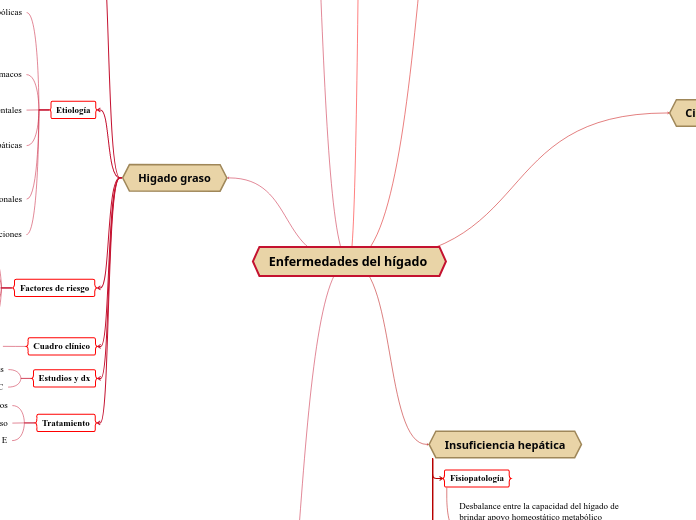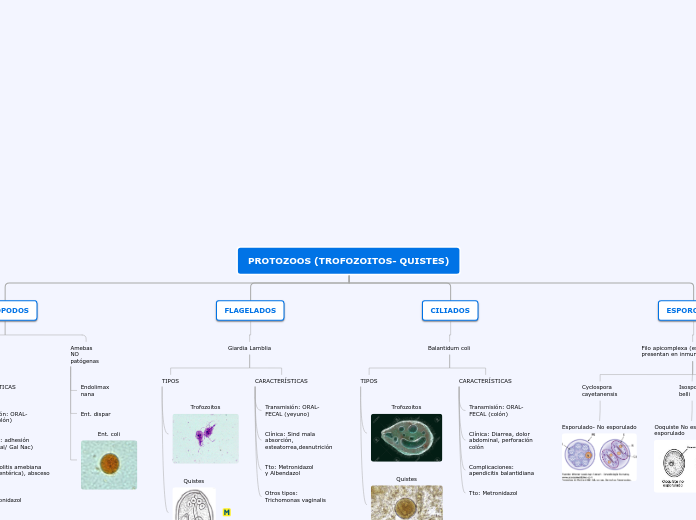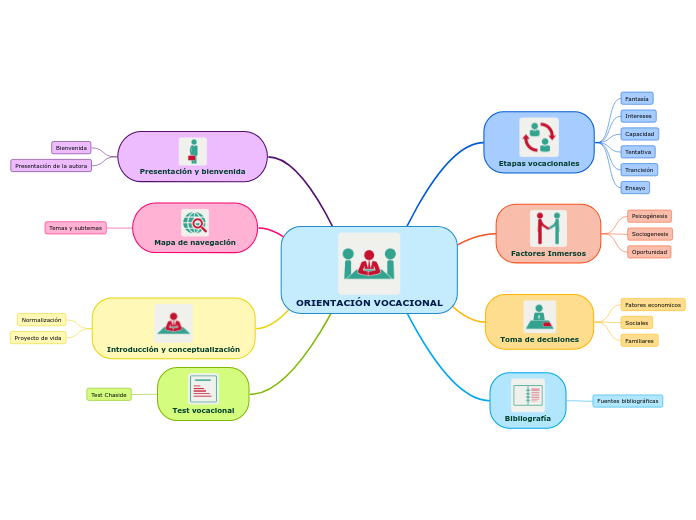Enfermedades del hígado
To name your story, you have to think about the overall message and what you want your audience to understand from the story. Also, make it relevant and easy to remember.
Cáncer de hígado
Quimiotersapia
Radioterapia
Ablación
Cirugía para cáncer de hígado
Pruebas de diagnóstico por imágen
Agrandamiento del hígado
Naúseas o vómito
Sensación de llenura
Pérdida de apetito
Enfermedades no frecuentes
Diabetes tipo 2
Tabaco
Consumo excesivo de alchol
Cirrosis biliar
Hepatitis viral crónica
Alfatoxinas
Acumulación de hierro
Suele derivarse de una cirrosis
Hepatoblastomas
Colangiocarcinomas
Carcinoma hepatocelular
Hiperplasia nodular
Adenomas hepáticos
Hemangiomas
Higado graso
Vitamina E
Suspención de fármacos
Pruebas para descartar HVB y HVC
Amnesis
Molestias en el lado superior derecho del abdomen
Presión alta
Altos niveles de lípidos
Hispanos
Mediana edad
Obesidad y DM2
Infecciones
Hepatitis B y C
Condiciones nutricionales
Malnutrición
Ayuno prolongado
Baypass
Condiciones extrahepáticas
Embarazo
Enf. inflamatoria intestinal
Insuficiencia cardiaca
Toxinas ambientales
AINE
Estrógenos
Corticoides
Enfermedades metabólicas
Hemacromatosis
Hiperlipemia
DM
Obesidad
Reducción de síntesis de lipoproteínas
Acumulación de triglicéridos
Inflamación y fibrosis
Acumulación de grasa
Pronósticos
Injertos de donante vivo: 90% (pacientes) y 82% (injertos)
Injertos de donante fallecido: 91% (pacientes) y 85% (injertos)
Estenosis
Disfunción
Hepatitis
Rechazo
Hipertranemia
Hipotensión
Estancia prolongada en la unidad de cuidados intensivos
Elevación de la toxina hepática
Esteatosis hepática
Edad >50 años
Artesia Biliar
Carcinoma
Necrosis
Transplante en dominó
Un hígado de un donante fallecido se implanta en un receptor con una enfermedad infiltrativa y el hígado enfermo explantado se da a un receptor anciano.
Transplante dividido
El hígado de un donante fallecido se divide en los lóbulos derecho e izquierdo o en el lóbulo derecho y el segmento lateral izquierdo (antes de explantarlo o ex situ) y se trasplantan en 2 receptores
Insuficiencia hepática
Apoyo nutricional
Transplante de hígado
Medicación para prevenir intoxicación
Exámen del tejido hepático
Pruebas dx por imágen
Observar determinadas causas de la insuficiencia hepática aguda
Análisis de sangre
Mide la coagulación de la sangre
Trastrornos hemorrágicos y sepsis
Desnutrición y ascitis
Déficit en la respuesta inmunofisiológica normal
Alteración en los factores de la coagulación I-II-V-VII-X y de las plaquetas.
hipoalbuminemia
Fármacos
Virus, principalmente hepatitis B.
Desbalance entre la capacidad del hígado de brindar apoyo homeostático metabólico adecuado ante una demanda incrementada o normal de las necesidades de los órganos de la economía.
Cirrosis
The ending of a story is essential. We all know that if the ending is weak, what happened before loses its importance. So make it unpredictable, but fair. A resolved ending answers all the questions and ties up any loose threads from the plot.
Médicamentos
Complicaciones
Coagulación sanguínea
Vitamina K
Antibioticos
Agentes quelantes
Deferoxamina
Trientina
Penicilamina
Corticoesteroides
azatoprina
Perdinisona
Relacionadas al alcohol
Acamprosanto
Naltrexona
Disulfiram
Pérdida de peso
Tratamiento psicológico para el alcoholismo
Subtopic
Biopsia
Resonancia magnética
Análisis de sangre para determinar exceso de bilirrubina
Perder peso sin intentarlo
Náuseas y vómito
Dolor leve o molestia en la parte superior derecha del abdomen
Poco apetito
Sentirse cansado o débil
Padecer hepatitis viral.
Tener sobrepeso.
Consumir demasiado alcohol.
This is the closure section of the story.
See examples of possible outcomes below:
- all problems have been solved
- it's clear how each one of your characters ends up
- your main character is transformed by the challenge
Hemocromatosis crónica del drenaje venoso
Colestasis obstructiva crónica
Hepatitis autoinmune
Esteatopheatitis mo alcoholica
Infección crónica
Try answering these questions in order for you to come up with a closure:
- Have all problems been solved?
- Is it clear what happens with all your characters in the story?
- Has the challenged transformed your main character?
- How do the characters feel in the end?
El consumo crónico de alcohol.
This is the moment when the main character surpasses the last obstacle and finally faces their greatest challenge.
The climax usually follows one of these patterns:
- realization
- resolution
- choice
Type in your answer.
Alteraci+on difusa de la arquitecura del hígado por fibrosis y nódulos de regeneración
Cambios histológicos intrahepáticos
Hepatitis no infecciosa
The middle of the story is where you add layers of complications that will lead to the end. Reveal more about the character's journey. Did their personality go through changes? How did they overcome the challenges? And as you build up the story’s central conflict, make it more personal to that character. Also, from the middle act, you have to lead into the final act.
No hay ningún tratamiento específico para la hepatitis.
Estudios y dx
Detección en la sangre de anticuerpos IgM o IgG anti-VHA.
Cuadro Clínico
Coloración amarillenta de la piel y los ojos, conocida como ictericia.
Orina oscura.
Náuseas y vómitos repentinos.
Dolor abdominal.
Fatiga constante.
Evacuaciones del color de la arcilla.
There wouldn't be any tension and excitement in your story if there weren't any obstacles in your character's way.
Saneamiento deficiente
Falta de agua salubre
Convivencia con una persona infectada
Relaciones sexuales con una persona con infección aguda por VHA
Consumo de drogas recreativas
Sexo sin protección
Viajes a zonas de alta endemicidad sin inmunización previa.
Your character(s) need(s) motivation in order to solve the challenge(s).
La hepatitis autoinmune y tóxica
Secondary characters also might have motivs beacuse of which they may cross path with main character or which might trigger them to help the main character.
Each story has a main character and that character usually needs to solve a problem or challenge. The character's challenge is the one that creates tension throughout the story.
El daño hepático es causado por linfocitos T CD4, aunque probablemente estén involucradas otras poblaciones celulares, incluyendo a las células Th17.
Hepatitis infecciosa
In the beginning of the story (or the exposition), you will need to introduce the setting and characters. You might also want to introduce the main conflict. This part of the story is important because it gives the reader necessary background information and maybe even a first insight into a character’s personality.
Tratamiento
No existe tratamiento
Estudios y diagnósticos
Detección en la sangre de anticuerpos IgM e IgG específicos contra este virus.
Cuadro clínico
Fatiga
Náuseas y vómitos repentinos
Dolor o malestar abdominal, especialmente en la parte superior derecha debajo de las costillas inferiores (en la zona del hígado)
Evacuaciones intestinales de color arcilla
Pérdida de apetito
Poca fiebre
Orina de color oscuro
Dolor articular
Color amarillento en la piel y en la parte blanca de los ojos (ictericia)
Picazón intensa
Factores de riesgo
Etiología
The setting (time & place) of a story can change throughout the plot.
Fisiopatología
Characters are essential to a good story. Usually, the protagonist(s) is/are the most affected by the plot. Introduce a character by focusing on their actions, interests, and occupation, as the physical appearance doesn't make a difference in most cases.
Character's name
Type in the name of your character.
Main Goal
What is your character's main goal?
fight Evilfind lovedefeat his/her enemyrule the worldmake friendstime travelmake an awesome discoveryOther
Character traits
Which traits best describe the character's personality? Choose more if necessary:
introvertedloyalkindindependentquick-thinkingadventuresomeidealisticsweet-naturedcalmrisk-takercreativewittystrictfussyweirdclumsyharshaggressivecarelessclingingcowardlycrueldeceitfulimpulsiveOther
Type of character
Choose the type of your chacter:
Protagonist (main character)Antagonist (main character's opponent)Flat (stereotypical character)Round (his/ her personality develops throughout the story)Static (doesn't evolve as a person throughout the story)Dynamic (dramatical change in personality)Confidant (the main character trusts him/ her)Foil (contrasting character who enhances the personality of another character)Other










